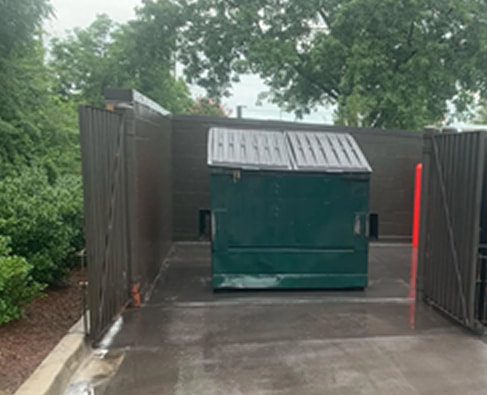To rent a dumpster, you'll require to take into consideration a number of essential elements to assure a smooth and effective waste administration experience. Beginning by comprehending local regulations, consisting of permit needs and waste disposal restrictions, after that select the right dumpster size based upon your task's requirements, taking into consideration variables like waste volume and product type. Prepare the delivery location by getting rid of obstacles and ensuring a level, degree surface area, and give necessary details concerning your job, rental period, and site-specific requirements. Ultimately, very carefully review and authorize a rental agreement that details terms, charges, and duties. By covering these bases, you'll be well-prepared for a successful dumpster rental experience, and discovering additionally will certainly expose a lot more important details to maintain in mind.
Dumpster Rental Basics
The rental process generally includes picking the preferred dumpster dimension, setting up a delivery date, and specifying the rental period.
Once the dumpster is provided, consumers can load it with waste, and the rental firm will take care of the disposal process. This hassle-free strategy makes it possible for individuals and companies to concentrate on their core activities while making sure responsible waste management
Dumpster rental solutions often consist of adaptable leasing periods, competitive pricing, and hassle-free scheduling options.
Understanding Regional Regulations
With dumpster rental solutions simplifying waste removal, it's equally crucial to contemplate the regulatory framework regulating waste disposal in your location. Understanding regional guidelines ensures a seamless and certified waste management process.
Permit Requirements: Talk to your local government to determine if you require an authorization to place a dumpster on your building. Some municipalities call for permits for dumpsters going beyond a specific size or for dumpsters put on public streets.
Waste Disposal Restrictions: Acquaint yourself with neighborhood guidelines governing the sorts of waste that can be disposed of in a dumpster. Certain materials like hazardous waste, electronics, or building and construction products may be prohibited or need special handling.
Placement and Storage: Understand neighborhood laws regarding dumpster placement, consisting of closeness to walkways, roads, and surrounding properties.
Confirm you abide by storage demands, such as covering the dumpster in the evening or during non-operational hours.
Choosing the Right Dumpster Size
Frequently, house owners and professionals alike underestimate the significance of choosing an appropriately sized dumpster, only to find themselves encountering unneeded logistical hurdles down the line.
A dumpster that is as well small can bring about costly overages and multiple trips to the landfill, while one that is also huge can lead to lost room and unneeded expense.
To stay clear of these concerns, it's critical to approximate the quantity of waste you expect to generate Take into consideration the size of your task, the sort of products being dealt with, and the weight of the debris.
Most dumpster rental business provide a range of sizes, commonly varying from 10 to 40 cubic backyards. A 10-yard dumpster is suitable for small cleanouts and do it yourself projects, while a 40-yard dumpster is better suited for large construction projects or business renovations.
Be sure to seek advice from your rental firm if you're uncertain regarding the dimension you need, as they can provide advice based upon your certain requirements.
Preparing the Shipment Location
Clear the method for a seamless dumpster delivery by preparing the drop-off area in advance.
A well-prepared site assures the distribution procedure goes smoothly and successfully, saving you time and hassle.
Before the dumpster arrives, take a couple of mins to:
Clear the location of obstacles: Relocate any kind of lorries, tools, or debris that might be in the means of the delivery location.
Check for low-hanging cables or branches: Establish there are no overhanging blockages that could disrupt the dumpster's placement.
Designate a certain drop-off location: Identify a level, degree surface where the dumpster can be safely placed.
Providing Essential Information
Once the delivery location is prepared, focus transforms to providing the necessary info to ensure an effective dumpster rental experience
This consists of sharing details concerning the job, such as the type and amount of waste to be taken care of, the duration of the rental duration, and any particular requirements or restrictions at the site.

Be prepared to give your contact information, including your name, phone number, and e-mail address, https://pastelink.net/n396xkyl so the rental company can remain in touch throughout the process.
You might additionally be asked about the kind of materials you intend to deal with, as some items, like hazardous waste or hefty products, might call for special handling or added fees.
Accurately providing this details identifies the rental business can provide the appropriate dimension and kind of dumpster for your needs, and that you recognize any kind of specific guidelines or guidelines that relate to your project.

Signing a Rental Agreement
With the required info supplied, the rental firm will usually require a signed rental contract to solidify the regards to the dumpster rental.
This contract assurances that both events are clear on the rental period, dumpster size, and any kind of added services or fees.
Before signing, review the arrangement meticulously to confirm you recognize the complying with bottom line:
Rental duration: The size of time you can maintain the dumpster on-site.
Fees and charges: Any kind of added expenses beyond the first rental cost, such as overage fees or late fees.
Responsibilities: Who is accountable for problems or accidents entailing the dumpster.